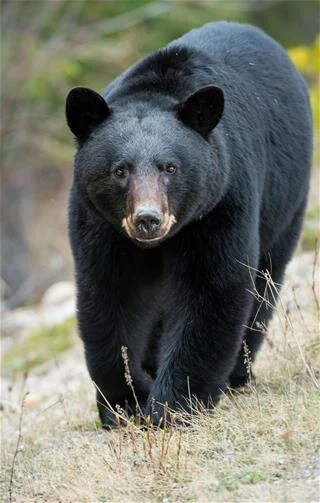GENERAL ATTRIBUTES
CLASSIFICATION
Common Name: American Black Bear
Scientific Name: Ursus americanus
Type: Carnivore
Diet: Omnivore
Average Life Span in the Wild: 20 years
Size: 5-6 feet in length, 3 feet at shoulder
Weight: 200 – 600 pounds
Vision
Bears see in color and have good vision. They see well at night and are good at detecting movements.
Hearing
Exceeds human frequency ranges and probably twice the sensitivity.
Smell
A bears’ sense of smell is excellent with their nasal mucosa area about 100 times larger than a humans enabling them to smell food sources up to 1 kilometer away.
Intelligence
Bears are highly intelligent with the largest brain as compared to other land mammals of similar size. They have superior navigational ability and excellent long-term memory.
Sounds
Bears are usually quite quiet in nature. They may make a variety of grunts in amiable situations and the cubs will make a low reverberating sound when they are feeding. Cubs make a loud ‘screaming’ type sound when they are nervous. When bears are giving you a warning about being too close to them they may clack their teeth, make a low moaning sound and/or a loud huffing type sound. Bears do not growl and have unfortunately been depicted as doing so in movies or children’s stories.
Swimming Ability
Bears are good swimmers and can swim at least a mile and a half in fresh water.
Running Speed and tree climbing
Bears can run up to speeds of 45 km/hr and can easily run quickly uphill, downhill, or on level ground. Bears are very agile and easily and quickly climb trees when necessary. Mothers tree their cubs when they sense nearby threats. When bears are at a larger body weight with a heavy winter coat they won’t move as quickly.
Daily Activity Period
Most bears become active a half-hour before sunrise and spend eighty percent of their time foraging. Most bears will nap during the day, especially during hot summer weather, making a day bed out of soft materials in the forest. While bears do a good portion of their roaming during night time it is also not unusual to see bears in the daytime as well.
Photo Credit: Paul Burwell Photography




